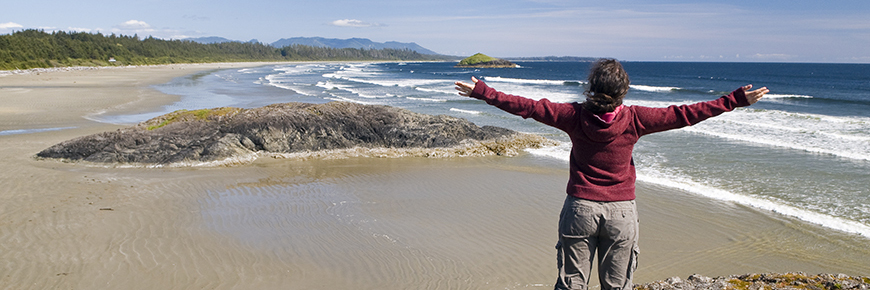
Discover the seashore
Pacific Rim National Park Reserve
- The intertidal: A land between the tides
- An incredible wealth of life
- Tides, time and you
- Careful where you put those two million feet
- Exploring the seashore (PDF, 939 Kb)
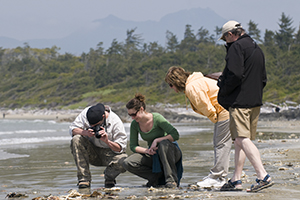
An early morning stroll on Combers Beach
Wander along a sandy beach, scramble over headlands, peer into tidepools, marvel at the life beneath a boulder, or watch the fury of the sea against the rocks. The seashore invites your exploration and discovery.
The intertidal: A land between the tides
"Intertidal" simply means "between the tides," and refers to all the land or shoreline exposed to the air at low tides, and covered by the ocean at high tides.
An incredible wealth of life
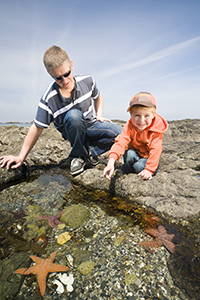
Giant green anemonies share the tide pools with many interesting creatures
Pacific Rim National Park Reserve of Canada protects an incredible abundance and diversity of life in the intertidal zone. The sheer number of different species in the intertidal zone is one reason why it's such an exciting place to explore.
But why does the intertidal zone of this national park have so many organisms, and so many different kinds of organisms?
There are many reasons:
- There are rarely any hard freezes that might kill intertidal plants and animals;
- Upwelling currents bring nutrient-rich water to shallower areas for plankton and bottom-dwelling plants to thrive on;
- The coast is free of pack ice that could scour away intertidal life;
- We have almost no plant-eating fish;
- The rock along much of the Pacific Ocean rim is highly stable, providing a secure foothold for many marine invertebrates and algae;
And it is often foggy (and therefore moist) in the summer, which helps keep creatures exposed to air from drying out or overheating.
Tides, time, and you
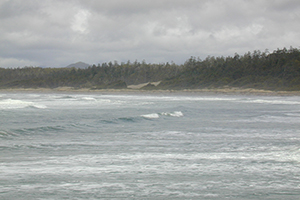
Logs floating at high tide can be dangerous
It's important to remember the "tide" in "intertidal". What you see and do in the intertidal zone depends on the height of the tide.
This national park experiences two high and two low tides in a typical day with roughly six hours between each low and high. The times and heights of the high and low tides change slightly with every succeeding day in response to the relative changes in location of the sun, moon and earth.
At low tide the beaches are wider and more of the intertidal creatures are visible. At high tide launching kayaks is usually easier and watching storms is more spectacular.
When you are exploring the shore it is extremely useful, and important to your safety, to be able to read tide tables. If you are unsure, ask a park employee before heading out.
Careful where you put those two million feet
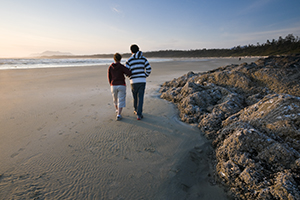
Human impact on the intertidal zone can cause significant damage
One organism that is incredibly abundant in our intertidal zone is Homo sapiens. Anyone walking the beach, exploring tidepools, launching kayaks, or pitching their tent on the beaches of the West Coast Trail is in the intertidal zone.
With 600,000 people visiting this park each year, human impact in the intertidal zone is significant. Here are some tips to help you reduce your impacts when exploring the intertidal zone:
Avoid the:
- Scrunch, grind & stomp: look carefully when placing your feet; the rocks are covered with life;
- Prod, poke & pry: explore gently; respect the life you discover;
- Full pockets, bags & bucket syndrome: leave the national park with memories and photographs; it is illegal to leave it with artifacts like shells, stones, driftwood, or seastars;
Remember the plants and animals on the rocks are alive, but dormant, awaiting the return of the tide and ocean water. Respect them as living things.
Our actions add up; we each play a role in conserving our parks.
- Date modified :